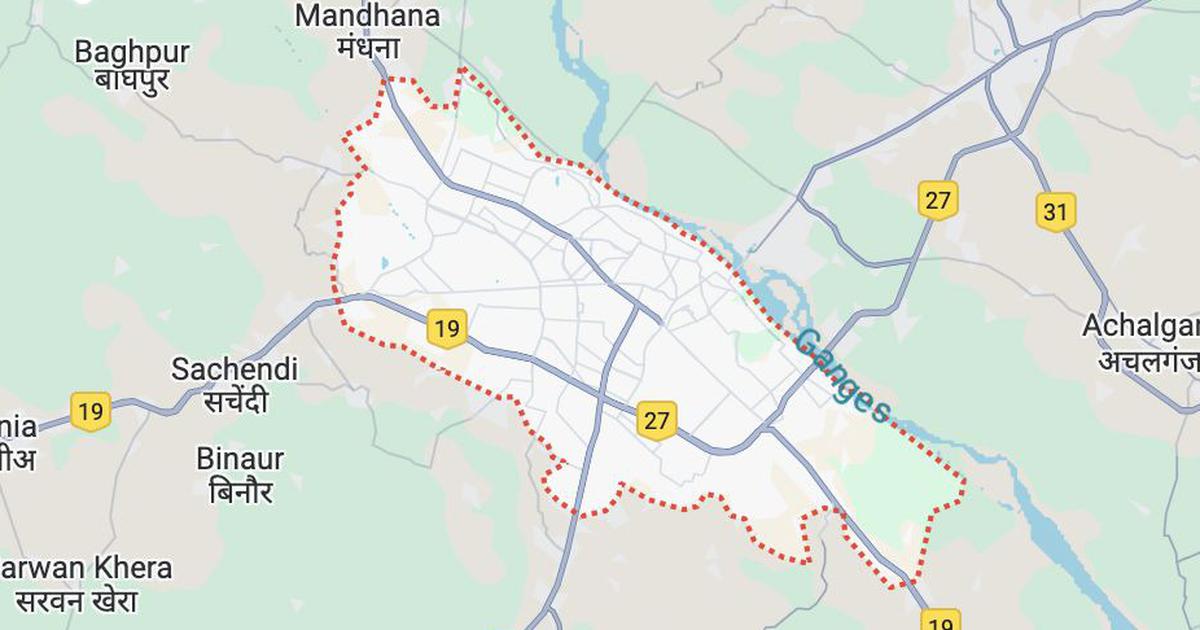
By Edward A. Gargan
The holy man, his long hair and beard matted and uncombed, a saffron-colored cotton robe draped over his left shoulder, sat regally in a bicycle rickshaw next to a policeman gripping an ancient Lee-Enfield rifle. The rickshaw driver, his wiry legs taut from his labors, sweat glistening from his chest, came to a halt before an age-eaten edifice where his charges alighted.
Gathering billows of saffron about him, the holy man clambered up a rise of stone steps into the building’s courtyard, sank into a weathered wooden armchair and declared, “I am the very man who put the idols inside the Masjid.”
What Mahant Ram Chander Das Parmahans did that day in December 1949 (if he is to believed — at least six other swamis make the same assertion) is put idols of Ram, a mythological Hindu god, inside a 16th-century mosque here that he asserts was built on the very ground where the god was born. That action, regardless of who actually did it, has festered for decades, pitting Muslims, who believe their mosque has been violated by Hindu chauvinists, against Hindus, who insist that their religious heritage was trampled by Mughal conquerers four centuries ago. 16 Die, Government Falls
So fevered are passions over the right to this hill on which the architecturally undistinguished Babri Masjid mosque sits that 16 Hindu radicals were killed last year as they tried to storm the mosque. The bloodshed led to the fall of the Indian Government and breathed life into a virulently pro-Hindu revivalist party, the Bharatiya Janata Party, now the largest opposition party in Parliament.
Now, tension over the site is rising again with Hindu chauvinist groups again storming police lines to put saffron pennants on top of the structure’s three domes. What they propose ultimately is to destroy the mosque and erect on the site a massive temple, or mandal, in Ram’s honor.
This is a place of winding streets dense with saffron-robed holy men and their devotees, innumerable Hindu temples and shops crammed with the regalia of devotion: yellow flowers, incense, garishly colored pictures of the Hindu gods Ganesh, Krishna, Shiva and, of course, Lord Ram himself. But from this remote town, the force of Hindu religious righteousness has spilled into the Indian heartland, into villages, towns and cities, and most noticeably into the hearts and minds of India’s emerging middle classes. Chauvinism, Nostalgia, Hostility
Emerging from the conflict is a melange of sentiments: outspoken chauvinist Hinduism, nostalgia for the mythological Aryan past of Indian religious epics, aggressive nationalism, and ferocious hostility toward the country’s minority Muslim population. Those sentiments are permanently coloring Indian life, from politics to sports and are, some people think, posing fundamental questions about whether India will long remain the secular democracy it has for four decades.
“The Hindu is the majority in India,” said Onkar Bhave, the statewide president of the Vishwa Hindu Parishad, or World Hindu Council, a militant religious organization intent on removing mosques erected on what it says are sacred Hindu sites. “Muslims make up only 10 percent or 12 percent. After independence we have a right to demolish these victory towers. We want our right to national glory.”
While some national advocates of Hindu chauvinism avoid public declarations that they are seeking to establish a religious state, Mr. Bhave has no such qualms.
“We intend to awaken Hindu consciousness,” he said from his organization’s training camp for young militants here, “to rid whatever weaknesses or wrong things have come into the Hindu community in order to facilitate a society run on Hindu lines and bring it back to its national glory.”
Entry to the mosque, the Babri Masjid, involves running a gantlet of metal detectors, frisking and armed police. A double row of steel-bar fencing surrounds the site and only small gateways open into the grounds of the mosque itself, a three-domed edifice that has been recently whitewashed to cover the damage caused by Hindu militants last year. Muslims Barred
Inside, a jumble of idols and pictures of Ram, as a child and as the blue-skinned heroic warrier depicted in the epic poem, the Ramayana, are arrayed in the central chamber. Policemen with old rifles watch as pilgrims offer sweets to the god and deposit change or bills in a large box labeled “donations.” Ever since the installation of the Ram idols in 1949, whether by Mr. Parmahans or not, Muslims have been barred from the mosque and only Hindu worship has been permitted.
Many of those who come to offer prayers and to defend the Hindu cause here are highly educated, intensely zealous Hindus determined that the legacy of Muslim conquest as represented by the mosque will be effaced.
“This Ram temple has to come up,” said N. S. Bhatnagar, a physician from Lucknow, the nearby capital of Uttar Pradesh state. “It will come. It is just like a shroud of cloth to Christians. People from far off, who are illiterate, worship Ram. Around Ram, the whole culture of Hinduism revolves.”
The conflict over the mosque here has found its way into the court system, with representatives of Muslim organizations arguing that the takeover of the mosque is wholly illegal. Representatives of the Hindus, and the state government, which is run by allies of the Hindu chauvinist parties, contend that the religious prerogatives of the majority community must ultimately hold sway. The Indian Government of Prime Minister P. V. Narasimha Rao appears to be willing to let the courts decide the issue.
“This is a victory memorial by a foreign invader,” said V. K. S. Choudhary, advocate general for the state of Uttar Pradesh and the man who is defending the right of Hindus to demolish the mosque. “This place is the ancient place revered by the people of this country. This is a thing of national honor.”
And then, as do so many people who feel passionately about the building of a new Ram temple, Mr. Choudhary began a diatribe against India’s Muslims.
“Muslim personal law is administered in India,” he said. “It is a slur on humanity. Muslims can have four wives. How is that equality for women? Whenever Muslims have come to the majority, all the norms of society are washed away. Look at Pakistan, look at Iran.” Concern About Principles
It is that animosity toward India’s Muslims that has raised concern among some Indians who feel that the nation’s pluralism and secularist principles are under seige. Rooprekha Verma, a professor of analytical philosophy at Lucknow University, has been ostracized by most of the faculty for her unwillingness to embrace the cause of Hindu supremacy and the cause of the Ram temple.
“I was born a Hindu, but I don’t feel anything for the Ram temple,” said Professor Verma. “The more educated people are the more rigid they are in their communalist stand.”
“Communalism” is the term Indians use for sectarianism.
“They are more confident of their outbursts, more rigid on Hindu-Muslim questions,” she continued. “I think the inciting fuel of communalism comes mainly from those who are educated, well-off people.” ‘A Fear Psychosis’
Professor Verma argued that Hindu chauvinist groups had manipulated Indians’ insecurities for political ends.
“There is this terror psychosis that Hindus might be eliminated and India might be declared an Islamic raj,” she said. “If it’s a fear pyschosis, facts don’t matter. Secularists don’t have mass appeal because we don’t create hysteria.”
Among those who are most fervent in their pro-Hindu activism are college students, Professor Verma said.
“The younger generation is much more polluted by fundamentalism than the older generation,” she said. “They are the children of people who have been propagating this. All around them they have heard communal language.”
Alarmed by the rapidly mushrooming appeal of Hindu fundamentalism, a group of younger politicians in New Delhi, most in their early 40’s, have formed a small group to combat sectarianism. Brought together by a former parliamentarian, M. J. Akbar, they issued a statement recently denouncing the Hindu chauvinist organizations for provoking unrest in Ayodhya and for campaigning on openly sectarian grounds.
“The moment has come for all centrist forces to unite for a common cause: to prevent our India from slipping into the clutches of facism,” the statement said. “Our unity cannot survive if we do not defeat communalism.” But Mr. Akbar’s group, nine young, articulate politicians from various center-left parties, are more than aware that they might represent a dwindling presence in Indian political life. All nine were defeated in their races for Parliament in last summer’s national elections.
Swami Parmahans takes obvious delight in the retreat of the secularists and enjoys flexing his newly burnished political muscles.
“The Governments of Rajiv Gandhi, V. P. Singh and Chandra Shekhar all fell because they wouldn’t let the mandal to Ram to be built,” he said, referring to the last three Indian Governments. “I will not permit any Government that does not permit the building of the mandal. I make the Governments. The Governments don’t make me.”
“The mandal,” shouted the swami, pulling on his beard, “will be built.”
This story was first appeared on nytimes.com






